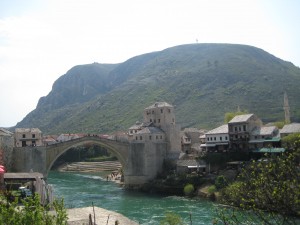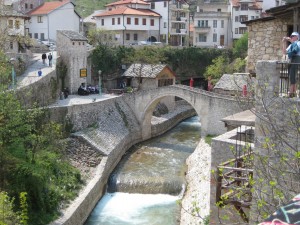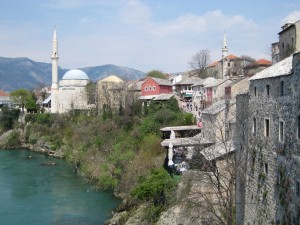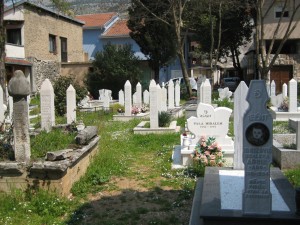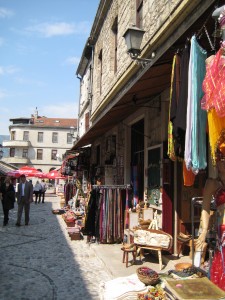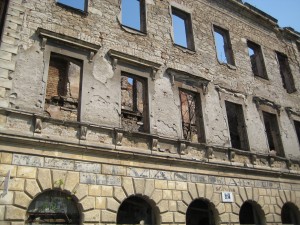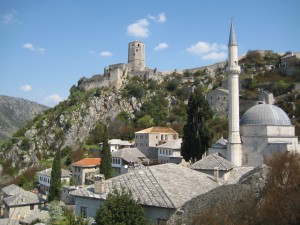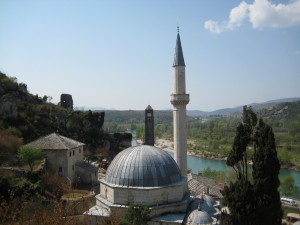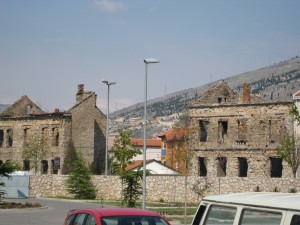On the final full day of our vacation we took a side tour to the city of Mostar in Bosnia and Herzegovina (BiH). Since it’s about a three hour drive from Dubrovnik we spent a lot of time in the bus, but it was still worth the effort as Mostar is a much different city culturally than the cities on the Dalmatian coast.  The city is often referred to as the place where “East meets West”. In the late 15th century the area was conquered by the Ottoman Turks and controlled for over 400 years until the Austro-Hungarian empire absorbed the city. During Turkish rule, the citizens were allowed religious freedom, however those that converted to Islam were given preferential treatment (including lower taxes) so a significant portion of the population become Muslim and continue to be to this day. However many did not convert and for hundreds of years Orthodox Serbs, Catholic Croats and Muslim Bosniaks lived harmoniously side by side.
During the Balkan conflicts in the 90’s the situation changed dramatically. After BiH declared their independence from Yugoslavia in 1992, the city was attacked by the Serb-controlled Yugoslav national army. The Croats and Bosniaks at first joined forces to fend off the attack and succeeded in pushing the Serbs back. However once the Serbs had been driven back the Croats started an offensive in an attempt to take over the entire city. Unfortunately as was the case in much of the conflict in the region at the time, the Croats undertook an aggressive ethnic cleansing campaign along with other war crimes. The conflict came to an end in November 1995 with the signing of the Dayton Peace Accord which introduced a complex system of governance that divides control of the country amongst each of the ethnic groups.  While the fighting may have stopped, the city of Mostar was left as a clearly divided city. Very few Serbs remain and the city is essentially split between the Croats and Bosniaks; while everyone lives in peace there is not the same mixing of religion and culture as there once was.
While much of the city has been rebuilt since the war (especially the tourist-oriented old town), evidence of the war is easy to spot. There are many damaged or bombed out buildings both in the city and along the road leading to the city. It’s also evident that while the economic situation is improving, the level of poverty is definitely higher than we experienced on the coast.
